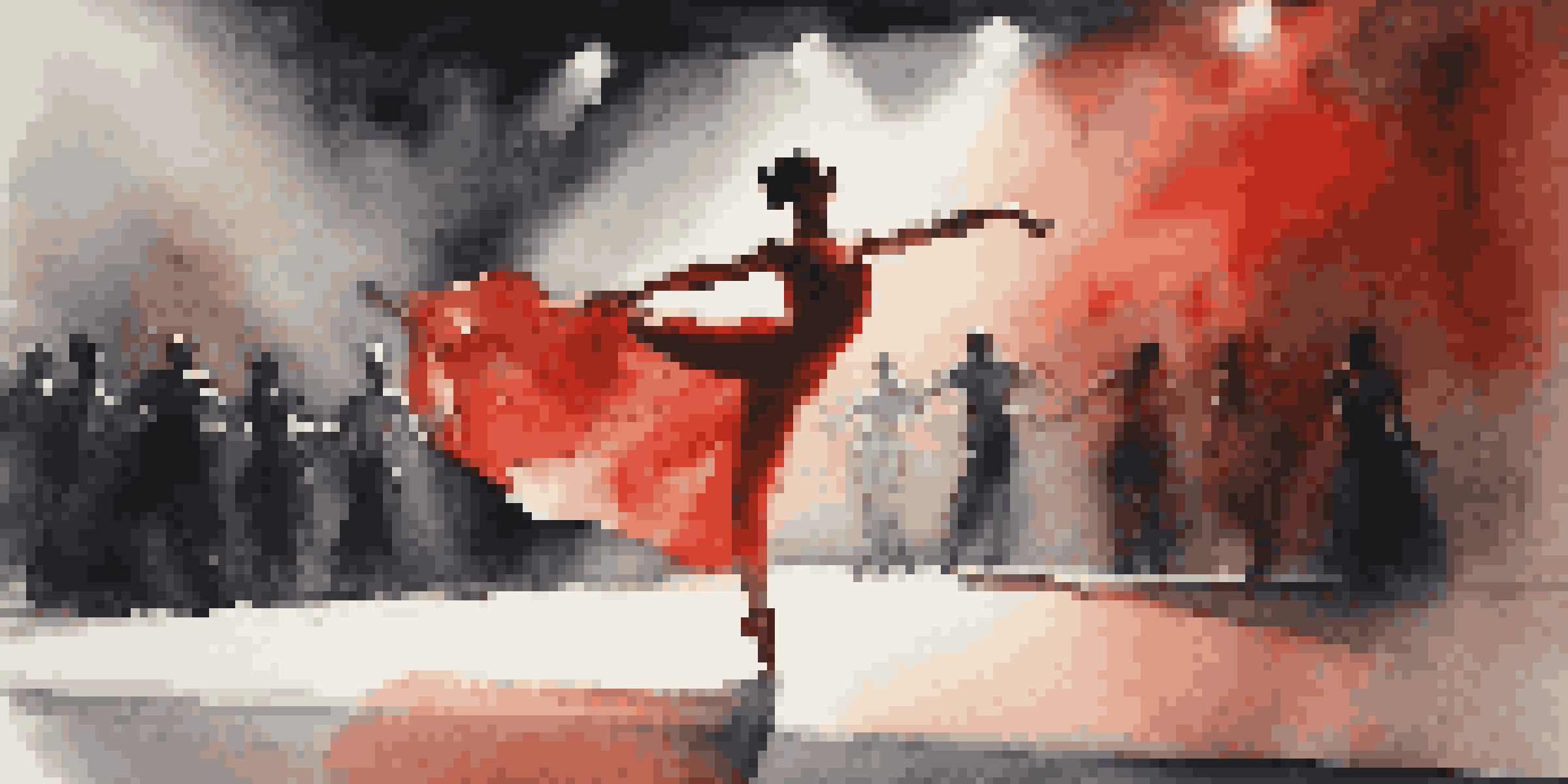The Influence of Dance Critics on Emerging Artists

The Role of Dance Critics in the Artistic Landscape
Dance critics serve as both observers and commentators in the dance world, offering insights that can significantly influence public perception. Their reviews often shape the narrative around performances, highlighting strengths and addressing weaknesses. For emerging artists, these critiques can feel like a double-edged sword, providing validation or posing challenges as they navigate their careers.
Building Visibility Through Reviews
For new dancers and choreographers, a favorable review can act as a spotlight, illuminating their work to a broader audience. Critics often have established platforms, meaning their written words can reach thousands, if not millions. This exposure can lead to more performance opportunities, collaborations, and even funding, making the critic's role essential in an artist's growth.
Critics Shape Artists' Careers
Dance critics play a crucial role in influencing public perception and providing visibility for emerging artists.
Constructive Criticism: A Learning Tool
While some may fear criticism, it can be a valuable learning tool for emerging artists. Constructive feedback from critics can help dancers refine their technique, improve stage presence, and enhance storytelling abilities. This process of growth can lead to more polished performances, ultimately benefiting both the artist and the audience.
Navigating Negative Reviews
Not every review will be glowing, and emerging artists must learn to navigate criticism gracefully. A negative review can be disheartening, but it can also serve as a catalyst for change. By identifying areas for improvement, dancers can use criticism to fuel their determination and evolve their craft over time.
Constructive Criticism Fuels Growth
Constructive feedback from critics helps dancers refine their skills and improve their performances.
The Power of Social Media Critique
In today's digital age, the influence of dance critics extends beyond print and traditional media to social media platforms. This shift allows for real-time feedback and discussion, often amplifying the reach of a critic's opinion. Emerging artists must understand how to engage with this dual-edged sword, using online critiques to their advantage while maintaining their artistic integrity.
The Relationship Between Artists and Critics
The dynamic between dance critics and emerging artists can be complex, often resembling a dance of its own. While critics aim to provide honest assessments, artists strive to express their unique voices. Building a respectful relationship can lead to a more supportive environment where feedback is seen as a collaborative effort rather than a mere judgment.
Navigating Feedback is Essential
Artists must learn to handle both positive and negative reviews to foster resilience and enhance their artistic journey.
Long-Term Impact on Career Trajectories
The influence of critics doesn't just impact immediate performances; it can shape long-term career trajectories for emerging artists. A strong foundation of positive critiques can lead to a more sustainable career in the arts, opening doors to new opportunities and partnerships. Conversely, consistent negative feedback can hinder progress, pushing artists to reevaluate their path.
Embracing Feedback for Artistic Growth
At the end of the day, the ability to embrace feedback—both positive and negative—will define an artist's resilience. Emerging dancers are encouraged to view critiques not as personal attacks but as essential components of their growth. By adopting a mindset that values constructive feedback, they can transform criticism into a powerful tool for artistic evolution.